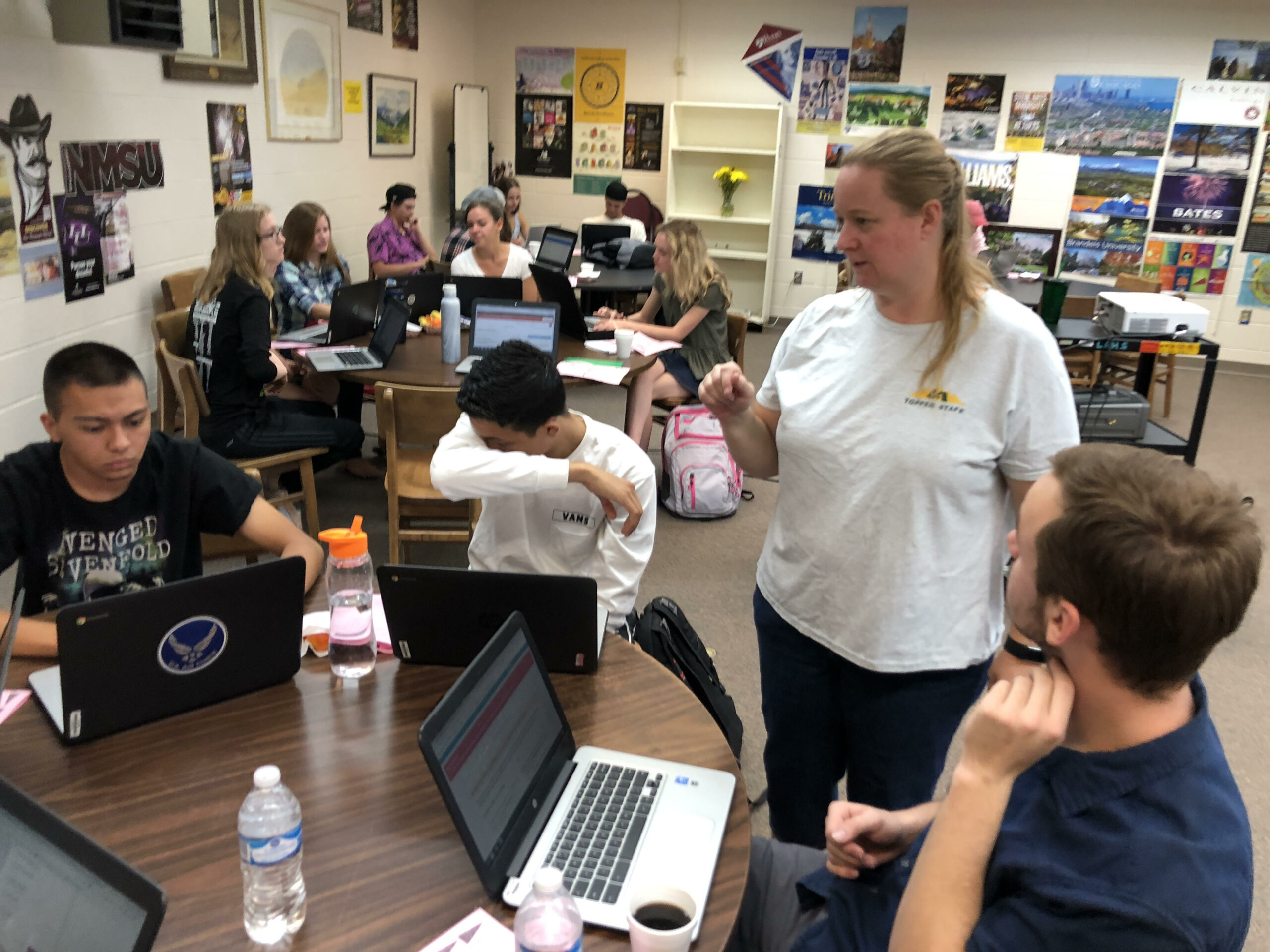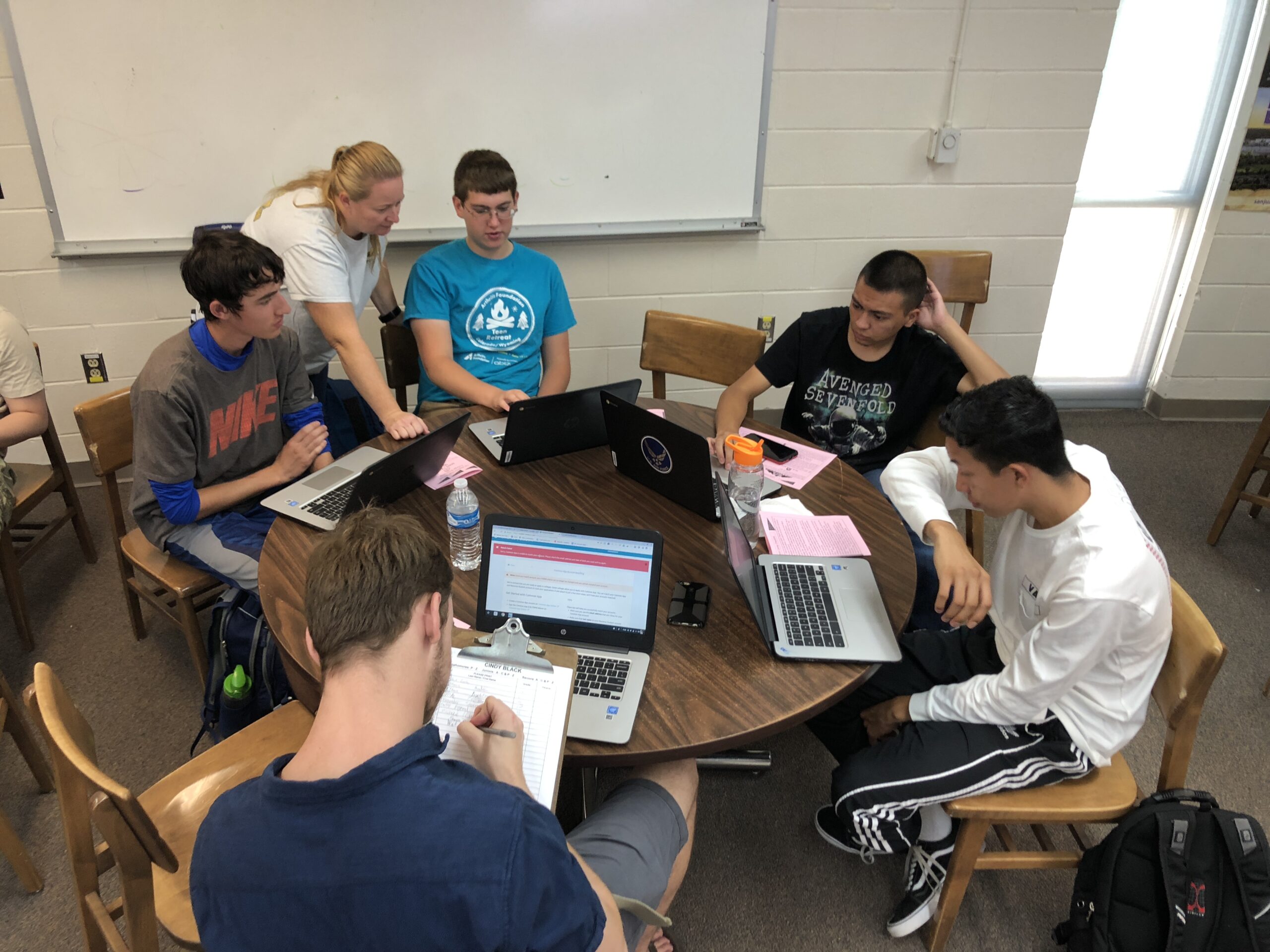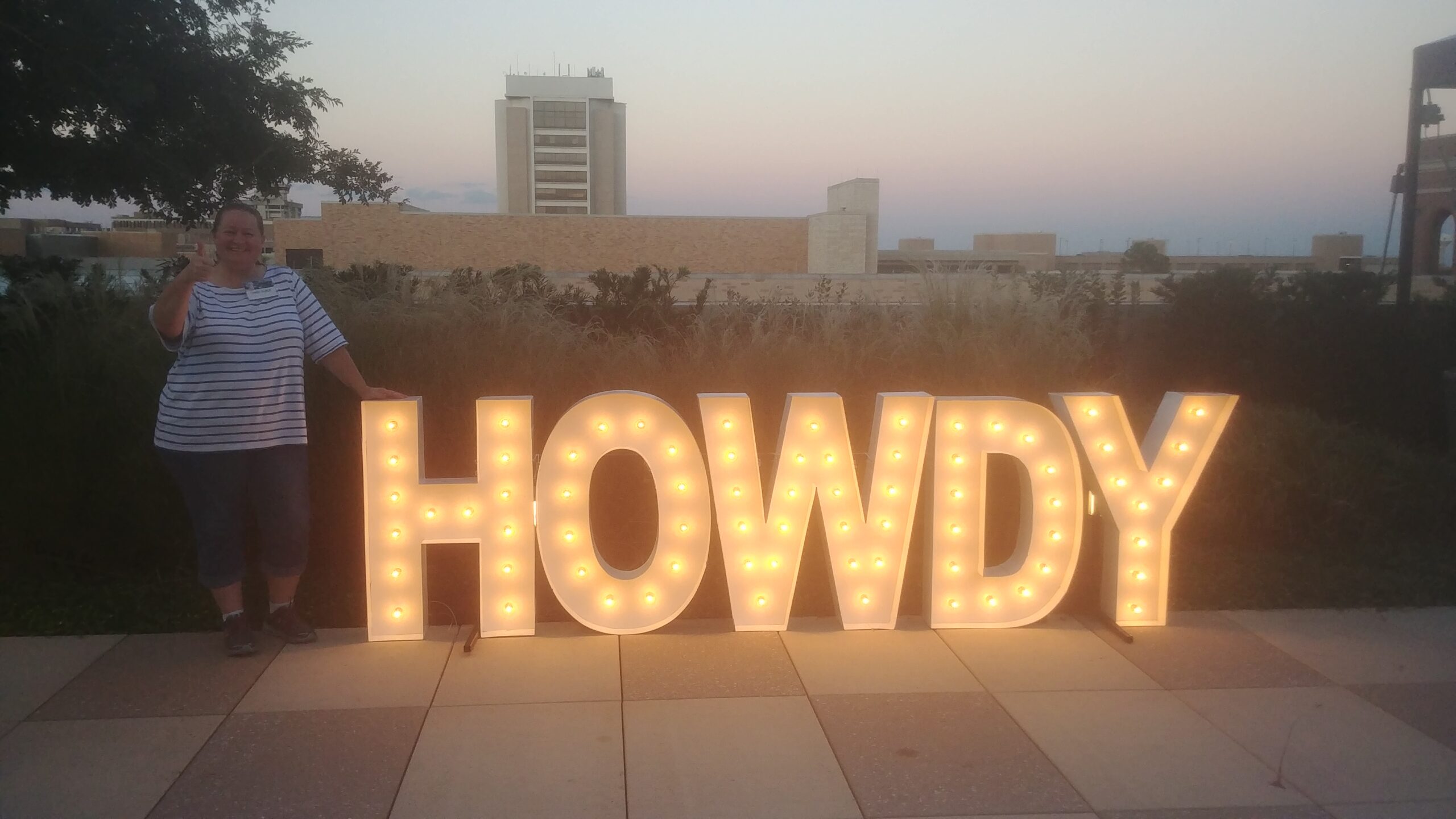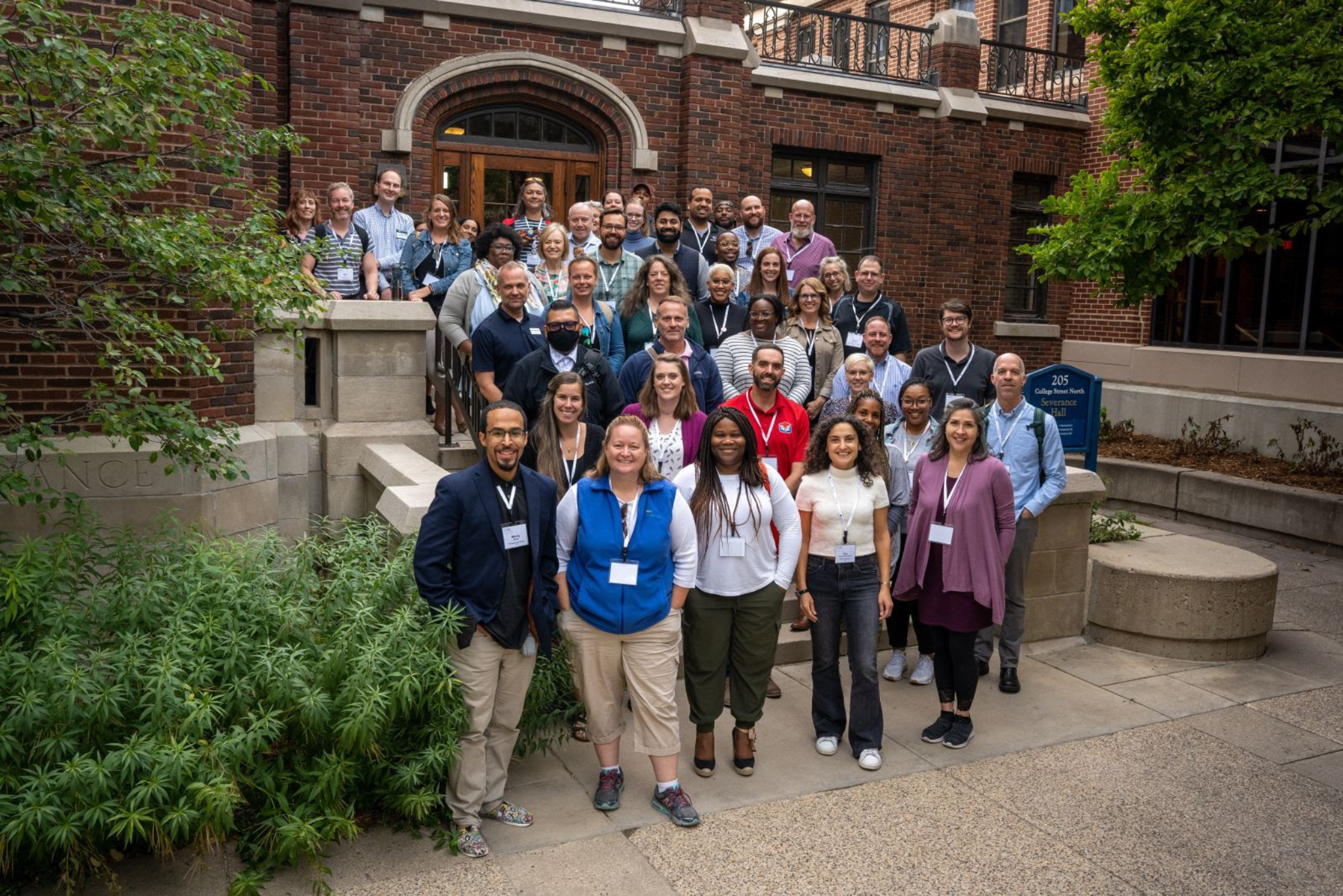Families Reach Higher Together
How To Talk With Your Teens About College
By Cindy Black
As a high school counselor, the question I get all the time is: “How do I start talking to my teen about college?” The truth is there is no one way. The starting point can be anything from a television commercial to someone in your family, extended family, or community pursuing college or professional training. You may notice that your teen is taking an interest in a particular subject or talking about a particular class. Just letting them know that you are interested can get the conversation started and begin an exciting college journey for you and your teen.
Exploring colleges, degrees, and programs can feel overwhelming, so continue to be supportive and treat it as a brainstorming session. Even when your five-foot-tall, never-played-basketball kid says they are going to be an NBA star, and your parental instinct is to be a realist, try saying: “Okay, but what if that doesn’t work out? What is your plan B?” Allow your student to direct the conversation. Every student finds their path at different times. Hopefully, they will have questions for you, but you may need to prompt them. The earlier you start talking about it, the better. Talking about going to college normalizes it and makes it feel more attainable. There are numerous opportunities as students move through high school, so get them thinking about the possibilities early.
Meeting with your high school student’s school counselor is a great way to identify opportunities throughout the year. They have a huge knowledge base and can direct you and your student to things like campus visits, college fairs, summer programs, and dual credit. If your high school student is interested in connecting with multiple colleges, there are two types of campus visits — ones you set up yourself and ones that students can access at school. Many college admissions officers visit local high schools throughout the year, and students are encouraged to take advantage of this opportunity to get information about colleges. You or your student can also choose to set up a campus visit directly through the college’s admissions office. It may be an open house or an individually scheduled visit tailored to your student.

College fairs, when a number of colleges and other programs get together, offer a venue where your student (and you) can access many colleges at the same time. Many high schools offer a college fair, and New Mexico offers a large fair every September in partnership with the Rocky Mountain Association of College Admissions Counselors.
During your teen’s high school years, summer programs may also be a great way to explore potential career pathways. There are many programs such as girls/boys state, physics camps for girls offered by LANL, internships, MASH (multiple avenues for health care careers), and College Horizons for Native American students, among others. Summer programs offer students a chance to try things out, make contacts, earn money, and get experience. Typically, summer programs require submitting an application and a resume. If your student does not have a resume, creating one would be an excellent first step for them. Many schools have resume-builder tools, but a quick search of the internet finds numerous tools that would also work well.
Dual credit programs are another option for high school students. These programs allow students in high school to take college courses. Courses are accessible to all New Mexican students and cover a wide range of academic and career aptitudes. Dual credit programs give students a chance to get ahead while building their confidence and demystifying college. Plus, these programs are typically free for the student.
In New Mexico, our high school graduation test is now the SAT (for the class of 2024). Schools offer the PSAT (practice test) in 10th grade and as an option in 11th grade. I always recommend the PSAT to my juniors because it gives them more practice before they take the SAT for graduation in the spring of their junior year. There are numerous scholarship and recognition programs that are also connected to the PSAT taken junior year. Even though many colleges are test optional right now, this may not be the case in the future, and many scholarships still require testing. It is a good idea for your student to be prepared either way. I also recommend taking the ACT at least once because students either do better on the SAT or the ACT. Taking both tests will let students choose their stronger test for college applications. Your school counselor has fee waivers for both tests if the cost of taking them is prohibitive. If your student is looking for a list of schools that are test optional, visit fairtest.org.

There are numerous online resources to help guide your teen’s journey. College Board offers a free tool that all students should be aware of called BigFuture. BigFuture has a college search function as well as scholarships. Speaking of scholarships, BigFuture offers the BigFuture scholarship. Students can enter a drawing for scholarship money by completing tasks such as searching on BigFuture and doing their FAFSA. If they complete all six tasks within the established timeline, they can enter a drawing for a $40,000 scholarship. Tularosa High School senior Lexi Gallegos was surprised on national television when she won the $40,000 scholarship in March 2022. So, it is possible and worth your time.
How to pay for college is always another big topic. The first place your student can look for money is at the college itself. Most colleges have some type of scholarship program for incoming freshmen. The application for admission is sometimes also the application for a scholarship. However, there might be a separate application and timeline. Help your student create a spreadsheet to keep track of schools they are interested in, their deadlines, and other relevant information. In New Mexico, we have the Lottery Scholarship, which starts in the second semester and currently pays 100% of tuition. We also have the Opportunity Scholarship, which starts in the first semester and covers tuition and fees. These scholarships are good at any of New Mexico’s public two-year colleges or public four-year colleges. Los Alamos National Labs Foundation offers a scholarship for many high schools in Northern New Mexico. You can also check with your local high school to see if they offer any type of local scholarship. If you live in a tribal community, check with the office of higher education.

Last but not least is the Free Application for Federal Student Aid (FAFSA). This is how your student gets money from the federal government to go to school. It comes in the form of grants (which you do not have to pay back), loans, or work-study (a student job on campus). The FAFSA opens on October 1 and is based on your taxes from two years ago. If you have a local college near you, their financial aid director will gladly help you, or you can ask your school counselor. Check with your local high school — they typically offer a financial aid night at the school with people who can walk you through the process. One last thing on scholarship money and the FAFSA: both should be free to fill out, so watch out for scammers. If it sounds too good to be true, it probably is.
The most important part of talking to your teen about college is to have the conversation. Your student likely has questions (and you might too), so you can find your way together. Take advantage of all the resources out there, such as programs offered at the high school or college and, of course, your school counselor. Do not be afraid to ask for help. In education, we often say it takes a village, and helping your student find their pathway is no exception.
Cindy Black is a school counselor and doctoral student. She has been a school counselor for 25-plus years and just started at the University of Nevada in the Counselor Education and Supervision doctoral program. She plans to complete her doctorate and teach school counseling. Cindy was born and raised in Wyoming and moved to New Mexico to attend college. She lives in Los Alamos with her husband and 10-year-old son. Her older son is a sophomore at ENMU.
————
Resources Covered in This Article:
- Boys State: nmboysstate.org
- College Board, Big Future: bigfuture.collegeboard.org
- College Fair; the State of New Mexico in Partnership With the Rocky Mountain Association of College Admissions Counselors: rmacac.org/spring-college-fairs
- College Horizons: collegehorizons.org
- Dual Credit:
- Free Application for Federal Student Aid (FAFSA): studentaid.gov
- Girls State: alanmgirlsstate.org
- Internships:
- The NM Workforce site has good resources: nmcareersolutions.com
- Scholarships:
- Los Alamos National Labs Foundation Scholarship: lanlfoundation.org
- New Mexico Lottery Scholarship: nmlottery.com/scholarships
- New Mexico Opportunity Scholarship: hed.nm.gov/financial-aid/scholarships/new-mexico-opportunity-scholarship
- Test Optional College Admissions: fairtest.org
- Women in Physics:




